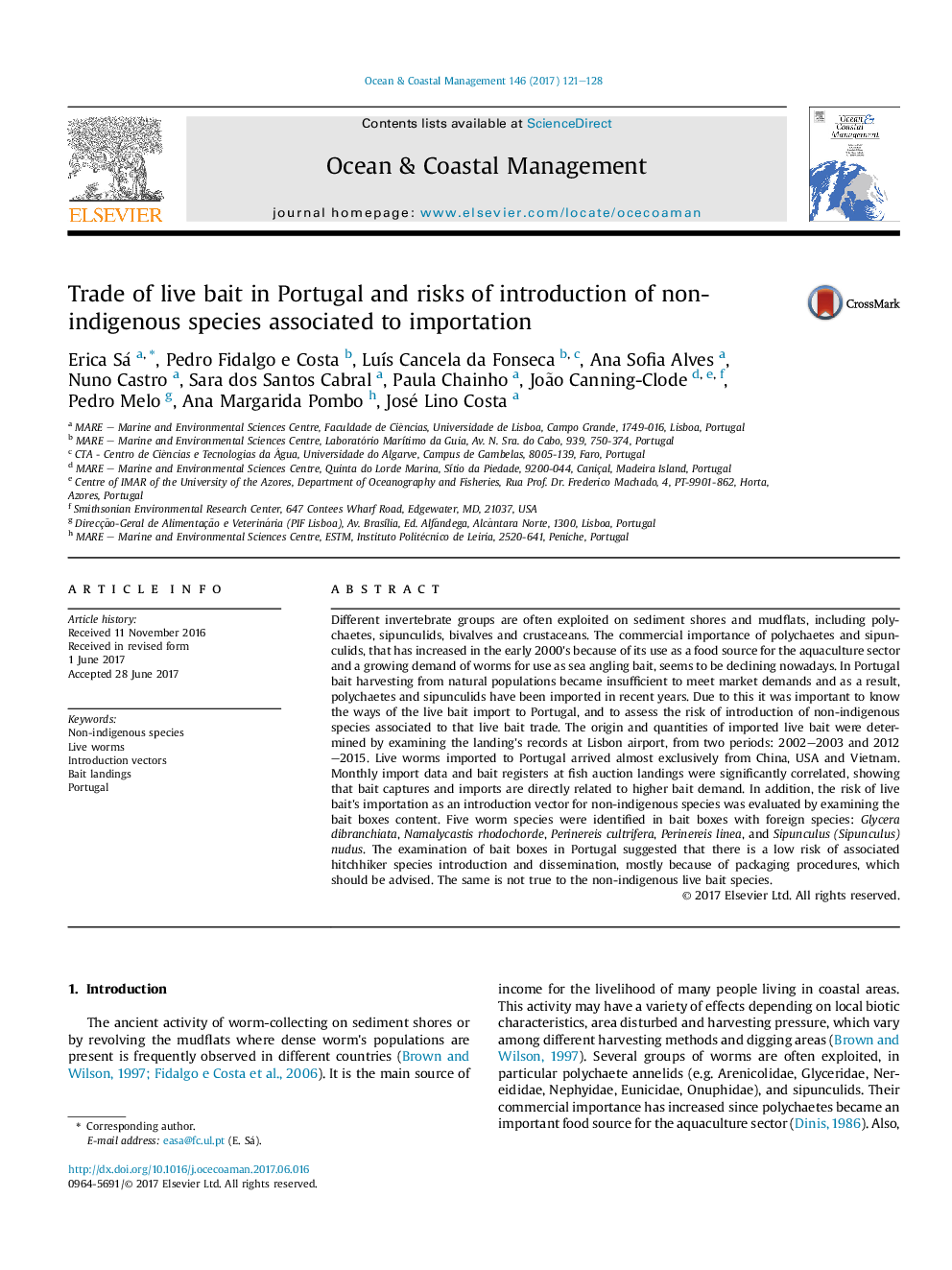| Article ID | Journal | Published Year | Pages | File Type |
|---|---|---|---|---|
| 5473878 | Ocean & Coastal Management | 2017 | 8 Pages |
Abstract
Different invertebrate groups are often exploited on sediment shores and mudflats, including polychaetes, sipunculids, bivalves and crustaceans. The commercial importance of polychaetes and sipunculids, that has increased in the early 2000's because of its use as a food source for the aquaculture sector and a growing demand of worms for use as sea angling bait, seems to be declining nowadays. In Portugal bait harvesting from natural populations became insufficient to meet market demands and as a result, polychaetes and sipunculids have been imported in recent years. Due to this it was important to know the ways of the live bait import to Portugal, and to assess the risk of introduction of non-indigenous species associated to that live bait trade. The origin and quantities of imported live bait were determined by examining the landing's records at Lisbon airport, from two periods: 2002-2003 and 2012-2015. Live worms imported to Portugal arrived almost exclusively from China, USA and Vietnam. Monthly import data and bait registers at fish auction landings were significantly correlated, showing that bait captures and imports are directly related to higher bait demand. In addition, the risk of live bait's importation as an introduction vector for non-indigenous species was evaluated by examining the bait boxes content. Five worm species were identified in bait boxes with foreign species: Glycera dibranchiata, Namalycastis rhodochorde, Perinereis cultrifera, Perinereis linea, and Sipunculus (Sipunculus) nudus. The examination of bait boxes in Portugal suggested that there is a low risk of associated hitchhiker species introduction and dissemination, mostly because of packaging procedures, which should be advised. The same is not true to the non-indigenous live bait species.
Keywords
Related Topics
Physical Sciences and Engineering
Earth and Planetary Sciences
Oceanography
Authors
Erica Sá, Pedro Fidalgo e Costa, LuÃs Cancela da Fonseca, Ana Sofia Alves, Nuno Castro, Sara dos Santos Cabral, Paula Chainho, João Canning-Clode, Pedro Melo, Ana Margarida Pombo, José Lino Costa,
